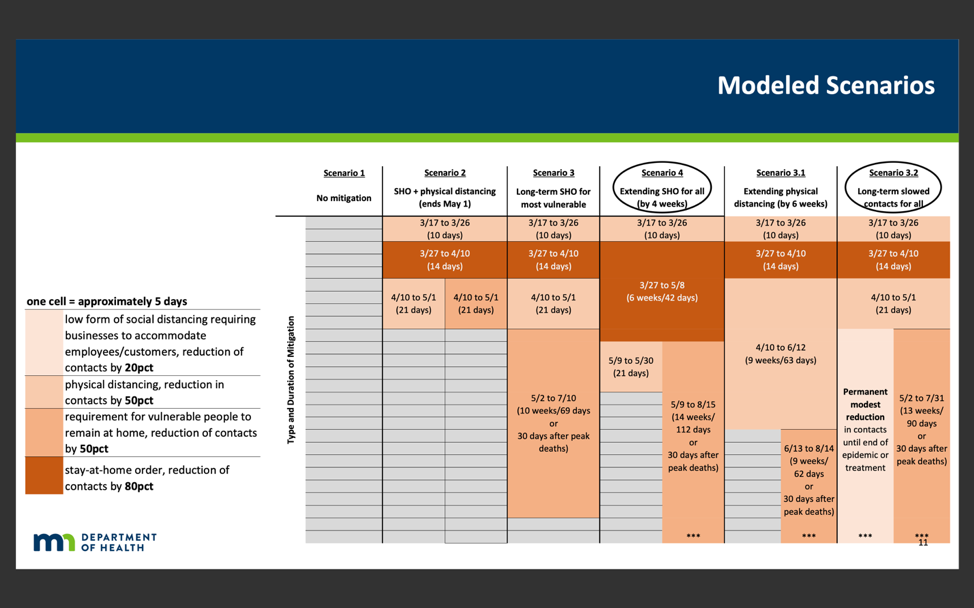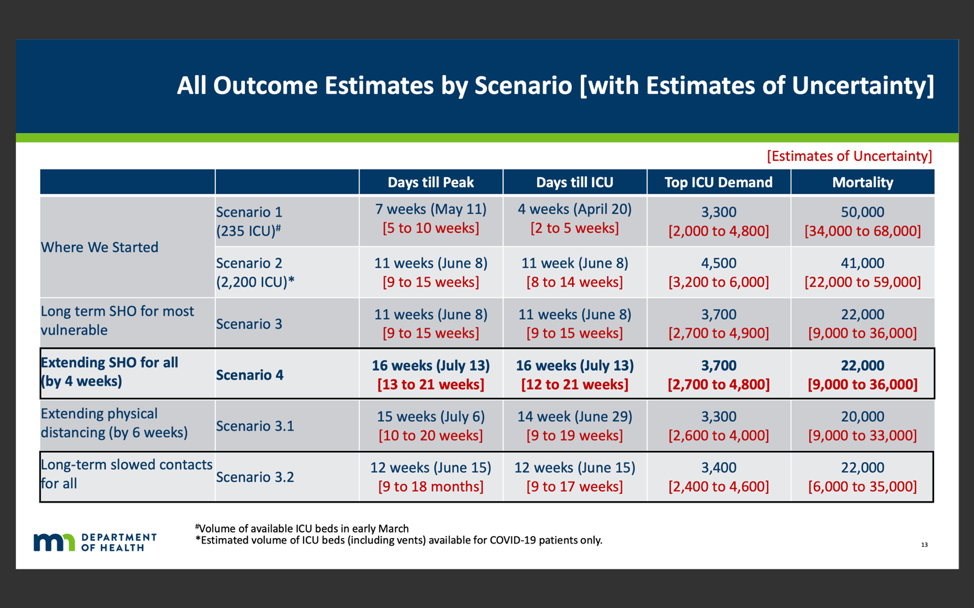Written by: Senator Michelle Benson (R- Ham Lake), Chair of the Senate Health and Human Services Committee.
(ST. PAUL, MN) – Minnesotans across the state are demanding the governor open up business. The Senate Health and Human Services Committee recently reviewed the governor’s Covid-19 model as presented by epidemiologists from the University of Minnesota and economists from the Minnesota Department of Health (MDH).
There are reasons to disagree with the governor’s model. It is heavily reliant on data from China, as opposed to more reliable data from Europe and the US, and does not factor in the differences in population density. Additionally, it does not consider the impact of improved testing or treatments. These and several other factors warrant skepticism of the model.
Many Minnesotans trust the Walz model but may not be aware that it presents several equally safe options and allows an earlier end to stay at home orders. They can rest assured knowing that projected mortality outcomes do not change if we open businesses immediately with added safety measures. Those who remain doubtful of the model will be pleased to note that their wish to re-open the state is not only reasonable but safe according to the administration’s statistics.
The Walz administration relies on the data in the tables below. It presents several scenarios with variances in social distancing levels.
Scenario number four, which most closely resembles Governor Walz’s actions, displays the Stay at Home Order issued for a total of 6 weeks. After this, social distancing for healthy individuals would be enforced for businesses another twenty-one days, until May 30th. At-risk individuals would be issued a Stay at Home order until August 15th.
Scenario 3.2 displays the original 14-day Stay at Home order issued by the governor. That order ended on April 10th. Social distancing measures would remain in place for another 21 days, ending on May 1st. Again, this period of social distancing means businesses are open with heightened hygiene and distancing measures. After May 1st, scenario 3.2 displays vulnerable people staying home until July 31st, rather than August 15th, as suggested in the scenario 4.
In comparing these two scenarios, the model shows little difference in top ICU demand and mortality. However, scenario 3.2 allows our economy to re-open significantly earlier than the governor’s current path. The economic pain people are feeling is real, and we need to take reasonable steps to protect the livelihoods, mental health, and rights of Minnesotans as we continue to prepare our Covid response.


